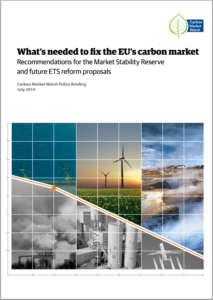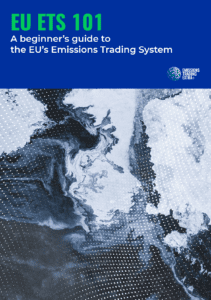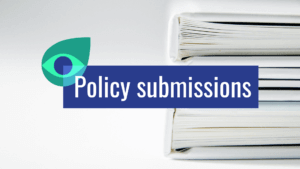Executive Summary


The EU ETS suffers from credibility issues and an overhaul of the system is necessary to ensure that the EU can play a leadership role in the run up to a global climate agreement. In the coming years, EU policymakers have the chance to improve the design of the EU’s carbon market as the proposal to enact a market stability reserve will be negotiated and new legislative proposals to implement the 2030 framework are expected in early 2015.
Measures to fix the problems of the EU ETS are necessary to set the European economy on a path to decarbonisation and avoid that future climate targets can be undermined for decades to come. Without action, European industry is at risk of falling behind in deploying low-carbon technologies compared to their competitors abroad. Moreover, the accumulated excess allowances put the emission reductions from other European policies at risk because it is possible to bank the unused oversupply of carbon allowances for use in the post-2020 period. This means that the EU ETS is transforming the emissions reductions from renewable and efficiency policies into future rights to pollute.
The EU’s weak emissions targets and the huge inflow of international offsets have led to an oversupply of carbon permits while the economic crisis reduced demand for these permits. The surplus in the EU’s carbon market amounts to 2.1 billion tonnes of CO2-equivalent and this surplus is projected to increase further to 2.6 billion carbon permits by 2020[i] which is more than the total tonnes of CO2 emitted in all the EU ETS sectors in a year.
Up to 2020, around 1.6 billion international offsets will be used under the EU ETS, diverting investments away from projects that increase the competitiveness of European industry and the modernisation of Europe’s energy system. The Commission has proposed to exclude the use of offsets after 2020, but the current use of offsets can still taint the domestic nature of the 2030 climate target because it is possible to bank allowances between trading periods. EU’s 2030 target to reduce domestic emissions by at least 40% could in reality only represent a 34% domestic cut due to the surplus being banked into the post-2020 period.
An overhaul of the EU ETS based on the following recommendations is urgently needed as the EU ETS is currently cancelling out the greenhouse gas reductions from other existing and future policies and hence does more harm than good in the fight against climate change.
Recommendations to fix the EU’s carbon market:
|
[i] EC (2014), SWD(2014)17, Impact Assessment accompanying the Proposal for a Decision concerning the establishment of a market stability reserve (see here)




